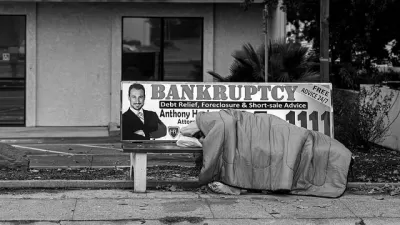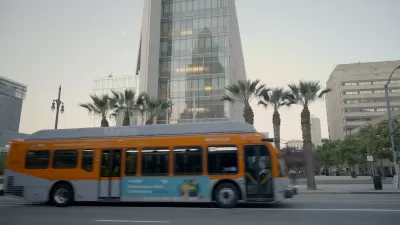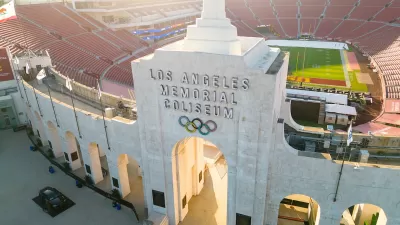Transit can be a vital resource for the homeless. In Los Angeles, where that population is growing, this is doubly true.

"For many homeless individuals living in cities, a robust public transit network is an invaluable resource, providing shelter when the shelters are full, inaccessible, or indifferent," Amelia Taylor-Hochberg writes for Curbed Los Angeles in a long-read article that details the policy response of the region's transit agency to a growing homeless population.
"The populations of chronically homeless people in both the city and county have consistently risen in the past few years," according to Taylor-Hochberg. Homeless advocates hope that, "[w]ith the constructive timing and a focus on coordinated efforts, transit agencies can deal a significant blow against homelessness," adds Taylor-Hochberg reports.
As the challenges of homelessness evolves, the Los Angeles County Metropolitan Transportation Authority (Metro) is looking for new ways to respond to the region's growing homeless population, including with the creation of a Homeless Task Force in Spring 2016. That task force is already hard at work on a new Transit Homeless Action Plan:
In October 2016, the task force received $1.2 million to create special outreach teams to respond exclusively to homelessness on Metro. These so-called C3 teams (County, City, Community), are contracted by the Department of Health Services and its subcontractor, People Assisting the Homeless (PATH), and are somewhat similar to previous efforts implemented in Skid Row. They’ll ride the system’s Red, Gold, and Green lines for a year, then report back to Metro to inform the Transit Homeless Action Plan.
FULL STORY: How Metro is responding to LA’s homelessness crisis

Alabama: Trump Terminates Settlements for Black Communities Harmed By Raw Sewage
Trump deemed the landmark civil rights agreement “illegal DEI and environmental justice policy.”

Planetizen Federal Action Tracker
A weekly monitor of how Trump’s orders and actions are impacting planners and planning in America.

Why Should We Subsidize Public Transportation?
Many public transit agencies face financial stress due to rising costs, declining fare revenue, and declining subsidies. Transit advocates must provide a strong business case for increasing public transit funding.

New California Law Regulates Warehouse Pollution
A new law tightens building and emissions regulations for large distribution warehouses to mitigate air pollution and traffic in surrounding communities.

Phoenix Announces Opening Date for Light Rail Extension
The South Central extension will connect South Phoenix to downtown and other major hubs starting on June 7.

How Housing as a Financial Product Harms Communities
Institutional buyers who treat housing as an investment product become disconnected from the impacts of higher rents, displacement, and housing instability.
Urban Design for Planners 1: Software Tools
This six-course series explores essential urban design concepts using open source software and equips planners with the tools they need to participate fully in the urban design process.
Planning for Universal Design
Learn the tools for implementing Universal Design in planning regulations.
Caltrans
Smith Gee Studio
Institute for Housing and Urban Development Studies (IHS)
City of Grandview
Harvard GSD Executive Education
Toledo-Lucas County Plan Commissions
Salt Lake City
NYU Wagner Graduate School of Public Service





























